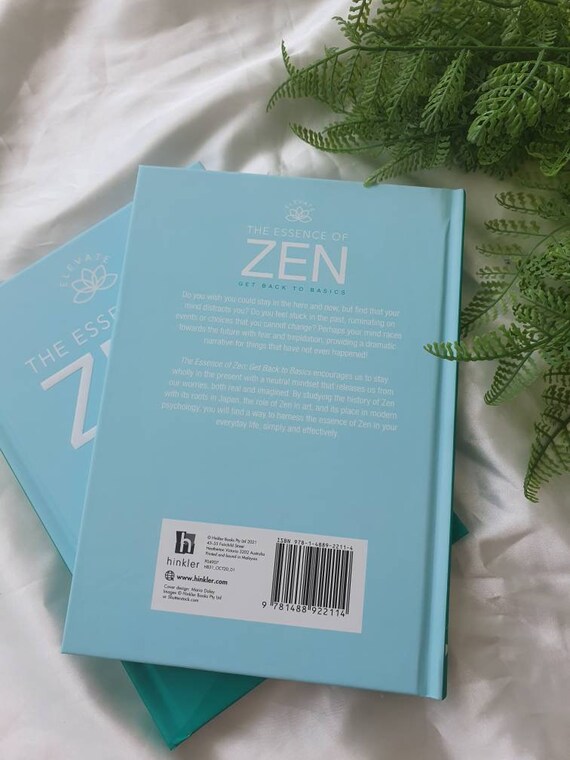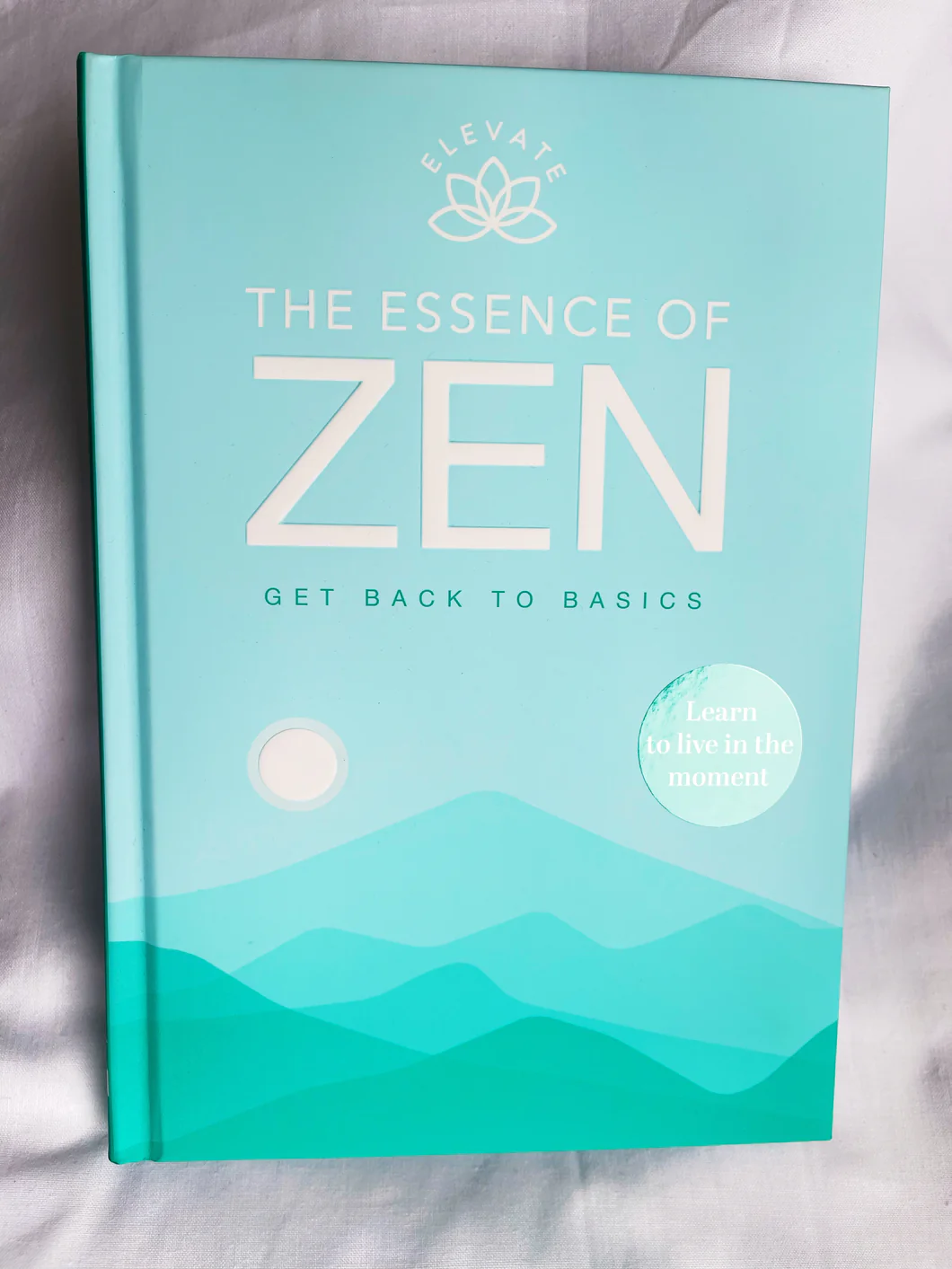The essence of Zen is the direct experience and realization of the present moment, free from conceptual thinking and attachment, aiming for a direct, unmediated understanding of one’s true nature.
Imagine standing on the shore of a tranquil lake, where the water is so still that it reflects the world around it with pristine clarity.
Now, consider Zen as a journey to embrace the serenity of that reflective surface within your own mind. It’s like peeling away the layers of chaos and chatter, allowing you to discover a profound sense of simplicity and presence.
Zen isn’t a strict set of rules or dogma; it’s more like a gentle breeze that whispers through the clutter of our thoughts. It encourages us to let go of the constant mental chatter, the perpetual to-do lists, and the endless worries that often fill our minds.
Instead, it invites us to be fully present in each moment, appreciating the beauty of simplicity and finding a deep sense of peace within.
Picture a bamboo forest where the bamboo sways gracefully in the wind. In the same way, Zen encourages flexibility and adaptability in the face of life’s challenges.
It’s about embracing the ebb and flow of existence, just as the bamboo bends without breaking.
So, the essence of Zen lies in simplicity, mindfulness, and the art of being fully engaged in the present moment. It’s not about escaping reality but rather about seeing it with fresh eyes, unburdened by unnecessary complexities.
It’s an invitation to find tranquility amid life’s whirlwind and cultivate a profound awareness of the beauty in the here and now.
Direct Experience and Mindfulness

Explanation of the importance of direct, experiential understanding:
Direct, experiential understanding is crucial in various aspects of life, including personal growth, learning, and spiritual development.
Unlike indirect or theoretical knowledge, direct experience involves firsthand engagement with the present moment, allowing individuals to gain insights that go beyond conceptual understanding.
This type of understanding is often associated with a deeper connection to one’s own thoughts, emotions, and surroundings.
Personal Growth: Direct experience enables individuals to confront challenges, overcome obstacles, and learn from their successes and failures. This experiential learning fosters personal growth by providing a tangible and authentic foundation for knowledge.
Learning: In educational settings, direct experience is essential for comprehensively understanding a subject.
Experiential learning methods, such as hands-on activities and real-world applications, enhance the retention of information and promote a more profound grasp of concepts.
Spiritual Development: Many spiritual traditions emphasize the importance of direct experience to attain deeper insights into one’s true nature and the nature of existence.
This direct engagement can lead to a more profound spiritual understanding and a sense of interconnectedness with the universe.
Emphasizing mindfulness and being present in the moment:
Mindfulness is a mental state characterized by full attention and awareness of the present moment without judgment.
Increased Awareness: Mindfulness allows individuals to be fully present, enhancing their awareness of thoughts, emotions, and sensations as they arise. This heightened awareness promotes a more profound understanding of one’s inner experiences.
Reduced Stress: Mindfulness helps individuals break free from excessive worry about the future or rumination about the past by focusing on the present moment.
Enhanced Concentration: Practicing mindfulness sharpens concentration and attention. This heightened focus allows individuals to engage more deeply with their surroundings and experiences.
Examples of mindfulness techniques in Zen practice:
Zen, a form of Buddhism, strongly emphasizes direct experience and mindfulness. Various techniques are employed to cultivate mindfulness in Zen practice:
Kinhin (Walking Meditation): In Zen practice, walking meditation is often integrated with seated meditation. Practitioners walk slowly and mindfully, coordinating their breath with each step, fostering awareness of body movement and the surrounding environment.
Mindful Eating (Oryoki): Oryoki is a traditional Zen practice of mindful eating. Practitioners eat in silence, paying full attention to each bite, savoring the flavors, and appreciating the nourishment provided by the food.
Koan Contemplation: Koans are paradoxical questions or statements used in Zen to provoke deep reflection. Meditating on a koan requires direct, experiential engagement with the inquiry, transcending conventional logic to attain a direct understanding.
In summary, the combination of direct, experiential understanding and mindfulness practices, as exemplified in Zen, provides a powerful framework for personal development, learning, and spiritual exploration.
These approaches encourage individuals to engage fully with their present experiences, fostering a richer and more meaningful life.
Non-Attachment and Liberation
Exploring the concept of non-attachment in Zen:
Non-attachment, a fundamental concept in Zen Buddhism,
involves cultivating a mindset of detachment from outcomes, possessions, and even one’s own ego. In Zen philosophy, non-attachment is seen as a path to liberation and spiritual awakening.
Impermanence (Anicca): Zen teaches that all things are impermanent and constantly changing. Non-attachment involves accepting this impermanence and recognizing that attachment to fleeting things leads to suffering.
By understanding the transitory nature of life, practitioners aim to release their grip on attachments.
Emptiness (Sunyata): The concept of emptiness in Zen suggests that all phenomena lack inherent, fixed existence. Non-attachment involves realizing the emptiness of self and objects, freeing oneself from the illusion of separateness and identity.
This insight promotes a more flexible and open-minded approach to life.
Detachment from Dualistic Thinking: Zen encourages practitioners to transcend dualistic thinking, where things are categorized as good or bad, desirable or undesirable.
Non-attachment entails seeing beyond these dualities and embracing the wholeness of experience without being entangled in judgments.
How letting go leads to peace and liberation from suffering:
Freedom from Craving: Attachment and desire often lead to craving, which, in turn, leads to suffering. By letting go of attachments, individuals free themselves from the constant cycle of craving and find peace in the present moment.
Reduced Anxiety and Stress: Non-attachment allows individuals to release worries about the future and regrets about the past. This liberation from the mental burdens of anxiety and stress contributes to a more tranquil and content state of mind.
Acceptance of Change: Embracing non-attachment involves accepting the inevitability of change.
Instead of resisting change, practitioners learn to flow with it, understanding that everything is constantly in flux. This acceptance reduces the suffering associated with clinging to the familiar.
Enhanced Interpersonal Relationships: Non-attachment extends to relationships, fostering healthier connections. When individuals are less attached to specific outcomes or expectations in relationships, they allow space for the organic development and evolution of those connections.
Practical tips for cultivating non-attachment in daily life:
Mindful Awareness: Practice being fully present in each moment, observing thoughts and emotions without attachment. Mindfulness allows for a direct experience of reality without getting entangled in judgments.
Reflect on Impermanence: Regularly contemplate the impermanence of all things. This reflection can serve as a reminder to appreciate the present moment and let go of attachments to things that are transient.
Simplify Possessions: Decluttering and simplifying one’s material possessions can be a practical way to cultivate non-attachment. Letting go of unnecessary belongings reduces the attachment to material things.
Meditation on Emptiness: Incorporate meditation practices that focus on the concept of emptiness. This can involve contemplating the nature of self and objects, recognizing their interdependence and lack of inherent existence.
In conclusion, non-attachment is a central theme in Zen philosophy, emphasizing the importance of letting go to attain peace and liberation from suffering.
Practical incorporation of non-attachment in daily life involves mindfulness, reflection on impermanence, simplification, gratitude, and specific meditation practices.
Collectively, these approaches contribute to a mindset that is more open, accepting, and free from the shackles of attachment.
Simplicity and Clarity
Discussing the Zen emphasis on simplicity in thought and action:
Zen philosophy strongly emphasizes simplicity in thought and action as a means to cultivate clarity and direct understanding. This simplicity is not about mere reduction or elimination but involves stripping away unnecessary complexities to reveal the essential nature of things.
Clearing the Mind: Simplifying thought in Zen involves letting go of cluttered, distracting mental patterns. By quieting the mind, practitioners create space for direct experience and insight.
Action in the Present Moment: Simplicity in action is about being fully present in each moment and avoiding unnecessary embellishments. It means engaging with tasks and activities with a focused and undivided mind.
Non-Attachment to Concepts: Zen encourages a simple and direct approach to concepts and ideas. Rather than getting entangled in elaborate intellectual constructs, practitioners seek clarity through direct experience and intuitive understanding.
Examples of simplicity in Zen arts, such as calligraphy and tea ceremonies:
Zen Calligraphy (Shodo): Every stroke is intentional and purposeful in Zen calligraphy. The emphasis is on expressing the essence of the subject matter with minimalistic yet powerful brushwork.
Zen calligraphy’s spare and uncluttered nature reflects the principle of simplicity, allowing viewers to connect directly with the energy and spirit behind the characters.
Tea Ceremony (Chado or Chanoyu): The Japanese tea ceremony is a profound example of simplicity in Zen arts. From the minimalist design of the tea room to the deliberate, unhurried movements of the tea ceremony, every element is chosen with care.
The emphasis is on creating an atmosphere of simplicity and tranquility, allowing participants to savor the moment without distraction.
How embracing simplicity can lead to a deeper understanding:
Clarity of Mind: Simplicity in thought and action helps clear the mind of unnecessary clutter, allowing for a more focused and clear awareness. This clarity enables individuals to see things as they are, fostering a deeper understanding of the present moment.
Direct Experience: Embracing simplicity encourages direct engagement with experiences, free from the complications of excessive analysis or overthinking. This direct experience can lead to profound insights and a more intimate connection with one’s surroundings.
Appreciation of the Essence: Simplifying various aspects of life allows individuals to appreciate the essence of things. Whether in relationships, work, or daily activities, focusing on the core elements fosters a deeper understanding and connection to the intrinsic value of each experience.
Reduced Distractions: Simplicity involves minimizing distractions and extraneous details, allowing individuals to concentrate on what truly matters. One can more easily discern the essential aspects of a situation or concept by eliminating unnecessary noise and complexity.
Mindful Presence: Embracing simplicity requires being fully present in the moment. This mindful presence enhances one’s ability to engage with life authentically, leading to a deeper understanding of oneself and the world.
In summary, the Zen emphasis on simplicity in thought, action, and artistic expression is aimed at fostering clarity and a direct understanding of reality.
Whether in calligraphy, tea ceremonies, or daily life, simplicity is a powerful tool for connecting with the essence of things, leading to a more profound and meaningful life experience.
Koans and Paradoxical Wisdom
Introduction to koans and their role in Zen practice:
Koans are enigmatic, paradoxical statements, stories, or questions used in Zen practice to provoke deep contemplation and insight.
They often defy conventional logic and are designed to break the limitations of linear thinking, leading practitioners beyond conceptual understanding to a direct, experiential realization.
Purpose in Zen Practice: Koans serve as tools to disrupt habitual thought patterns and challenge the intellect. Zen teachers employ them to guide students beyond conceptual understanding and into a direct, non-dualistic experience of reality.
Beyond Verbal Understanding: Koans are not meant to be solved through logical reasoning. Instead, practitioners engage with them as a form of meditation, allowing the mind to grapple with the paradox presented and ultimately to transcend ordinary modes of thinking.
Examples of famous koans and their purpose:
Mu: The koan “Mu” poses the question, “Does a dog have Buddha-nature?” This koan aims to push practitioners beyond dualistic thinking and logical analysis. The answer lies in a direct, non-conceptual experience, often described as the experience of “Mu” itself.
What is the sound of one hand clapping?: This classic koan challenges the mind to go beyond the conventional understanding of clapping and dualistic concepts. It encourages practitioners to explore the nature of perception and the limitations of language and logic.
The Gateless Gate (Mumonkan): The entire collection of koans known as the Mumonkan, compiled by the Zen master Mumon, presents a series of paradoxical cases meant to confound the intellect. One famous case is the koan of Joshu’s Dog, where the master responds to the question of whether a dog has Buddha-nature with the exclamation, “Mu!”
No Water, No Moon: This koan explores the relationship between the moon’s reflection and the water. It challenges the practitioner to perceive the interdependence of phenomena and understand that the reflection is not separate from the water.
How working with koans transcends logical thinking:
Direct Experience: Koans are not meant to be solved through ordinary analytical thinking. Instead, practitioners engage with them to induce a “not knowing” state and open themselves to direct, experiential understanding.
The goal is to go beyond words and concepts and directly experience the truth that the koan points to.
Breaking Dualistic Thinking: Koans often present paradoxes or apparent contradictions that cannot be resolved through ordinary dualistic thinking.
By grappling with these paradoxes, practitioners are led to transcend the limitations of binary, either/or thought patterns.
Non-Linear Insight: Koan’s practice involves a non-linear approach to insight. It is not a matter of reasoning step by step to a conclusion; instead, it is about a sudden, intuitive breakthrough that transcends the limitations of conventional logic.
Experiential Realization: Working with koans is not about intellectual understanding but a direct, experiential realization. It encourages practitioners to immerse themselves fully in the inquiry, allowing the koan to penetrate their consciousness deeply.
In summary, koans play a vital role in Zen practice by challenging practitioners to transcend logical thinking and dualistic concepts.
The purpose is to facilitate a direct, non-conceptual experience of reality, foster insight, and deepen one’s understanding of the nature of existence.
Working with koans is a profound and transformative aspect of Zen training, guiding practitioners toward a direct realization of truth beyond ordinary cognition.
Emptiness and Interconnectedness
Explaining the concept of emptiness (Sunyata) in Zen:
The concept of emptiness, or Sunyata, is a fundamental aspect of Zen philosophy and other Buddhist traditions. Emptiness does not imply a lack of existence but rather the lack of inherent, independent existence.
It emphasizes the interdependence and interconnection of all phenomena. In Zen, understanding emptiness is crucial for transcending dualistic thinking and realizing the true nature of reality.
Non-Inherent Existence: Emptiness suggests that all phenomena lack a fixed, independent, and inherent essence. Instead, things exist in relation to each other, and their identities are contingent upon various conditions and factors.
Interconnectedness: Emptiness is closely tied to the concept of interconnectedness. It asserts that everything is interrelated, and no isolated, self-existing entities exist. The understanding of emptiness encourages a holistic perspective on the nature of existence.
Freedom from Attachment: Embracing emptiness involves recognizing the insubstantial nature of the self and all phenomena. This realization fosters freedom from attachment and allows individuals to engage with life without being burdened by grasping or clinging.
Embracing the interconnected and impermanent nature of reality:
Interconnectedness: The realization of emptiness naturally leads to an appreciation of interconnectedness. All things are interconnected, and recognizing this web of relationships encourages a sense of compassion, empathy, and a deep understanding of the interdependence of all life.
Impermanence (Anicca): Emptiness is closely related to the concept of impermanence. If all things lack inherent existence, they are subject to constant change.
Embracing impermanence allows individuals to navigate life more flexibly, accepting all experiences’ transient nature.
Non-Dualistic Perspective: Reality’s interconnected and impermanent nature challenges dualistic thinking, where things are perceived as separate and distinct. Embracing these principles encourages a non-dualistic perspective, fostering harmony and unity.
Reflection on the transformative power of understanding emptiness:
Freedom from Illusions: Understanding emptiness liberates individuals from the illusions of fixed identity and separateness. This freedom from illusions allows for a more authentic engagement with life, unencumbered by distorted perceptions.
Compassion and Empathy: Emptiness, emphasizing interconnectedness, nurtures compassion and empathy.
Spontaneity and Flow: The understanding of emptiness encourages a more spontaneous and open approach to life. By letting go of fixed expectations and attachments, individuals can navigate experiences with greater ease and flow.
Harmony with Change: Embracing emptiness means embracing impermanence and change. This allows individuals to find harmony in the midst of life’s flux, cultivating resilience and adaptability.
Transcendence of Dualities: Understanding emptiness transcends dualistic thinking, bringing about a non-dual awareness. This shift in perspective contributes to a more harmonious relationship with oneself, others, and the world.
In summary, the concept of emptiness in Zen is a profound teaching that invites individuals to explore reality’s interconnected and impermanent nature.
The transformative power of understanding emptiness lies in freeing individuals from illusions, fostering compassion, encouraging spontaneity, harmonizing with change, and transcending dualities.
Teacher-Student Relationship

Highlighting the significance of the teacher-student dynamic in Zen:
The teacher-student relationship is of paramount importance in Zen practice, serving as a cornerstone for the transmission of wisdom and the cultivation of spiritual insight. In Zen, the teacher, or Zen master (roshi), is crucial in guiding students toward enlightenment.
The dynamic between teacher and student is characterized by trust, humility, and a shared commitment to the practice.
Transmission of Lineage: Zen strongly emphasizes the direct transmission of insight from teacher to student. This transmission forms an unbroken lineage, passing down the teachings and experiential wisdom of the past masters.
hallenge and Support: A Zen teacher challenges students to go beyond their conceptual limitations, pushing them to confront barriers and deepen their understanding.
At the same time, the teacher offers unwavering support, recognizing and nurturing the potential within each student.
Exploring how guidance from a teacher contributes to the Zen journey:
Pointing to Direct Experience: While Zen teachings emphasize direct experience, the teacher plays a crucial role in pointing the student toward the ineffable nature of reality.
Through words, gestures, and sometimes silence, the teacher guides the student beyond intellectual understanding to a direct, non-conceptual experience.
Providing a Role Model: The teacher embodies the fruits of the Zen path, serving as a living example of awakened living. Students often look to their teacher as a role model, observing how the teachings manifest in the teacher’s conduct, compassion, and wisdom.
Creating a Supportive Community: The teacher fosters a sense of community among practitioners, creating a supportive environment for collective learning and growth. This community aspect is integral to the Zen journey, providing a shared space for mutual encouragement and inspiration.
Personal anecdotes or stories illustrating the impact of a mentor in Zen practice:
Mazu’s “Special Transmission”: In the famous encounter between the Zen master Mazu and his student Baizhang, Mazu asks, “What is the meaning of the patriarch’s coming from the West?” Baizhang responds, “The oak tree in the front garden.” Mazu acknowledges the answer as a “special transmission outside the scriptures, not founded on words or letters.”
This story illustrates the direct, non-conceptual transmission of wisdom from teacher to student.
Hakuin’s Enlightenment: The renowned Zen master Hakuin had a transformative encounter with a teacher when he was a young monk. The teacher struck Hakuin, prompting him to reevaluate his understanding.
This event sparked a profound realization for Hakuin, leading to his enlightenment. The impact of the teacher’s unconventional method was instrumental in Hakuin’s spiritual awakening.
Shuzan’s Guidance: A student approached the Zen master Shuzan, seeking guidance on how to attain enlightenment. Shuzan replied, “Have you had your breakfast?” The student replied affirmatively. Shuzan then said, “Wash your bowl.”
This seemingly mundane interaction illustrates how the teacher directs the student’s attention to the ordinary aspects of life, emphasizing mindfulness and presence in everyday activities.
These anecdotes underscore the transformative power of the teacher-student relationship in Zen practice.
Whether through direct transmission, challenging encounters, or simple guidance, the teacher’s role is pivotal in guiding students toward a deeper understanding of themselves and the nature of reality.
Everyday Activities as Meditation
Discussing the integration of mindfulness into daily life:
Mindfulness, rooted in Buddhist traditions and widely practiced in Zen, involves cultivating awareness and presence in the current moment.
While formal meditation sessions are valuable, Zen emphasizes the integration of mindfulness into everyday life. This integration transforms routine activities into opportunities for heightened awareness and a deepened sense of presence.
Continuous Awareness: Zen encourages practitioners to extend mindfulness beyond the meditation cushion, fostering continuous awareness throughout the day. This involves paying full attention to each moment, whether engaged in routine tasks or more complex activities.
Breaking Automatic Pilot: Many daily activities are performed on “automatic pilot” as the mind wanders or fixates on the past or future. Mindfulness interrupts this autopilot mode, allowing individuals to engage with their experiences with intention and attention.
Cultivating Presence: Individuals cultivate a heightened sense of presence by infusing daily activities with mindfulness.
How activities like walking, eating, and working can be forms of meditation:
Walking Meditation (Kinhin): In Zen practice, walking meditation is often integrated with sitting meditation. Practitioners walk slowly, deliberately, coordinating each step with the breath.
Mindful Eating: Eating can be a meditative practice in Zen. Individuals can transform a simple act into a mindful, nourishing practice by bringing full attention to the sensory experience of eating—the textures, flavors, and smells.
This cultivates a deeper appreciation for the sustenance provided by food.
Work as Meditation: Zen encourages viewing work not merely as a means to an end but as an opportunity for mindfulness. Engaging fully in tasks, whether routine or complex, transforms work into a form of meditation.
This involves giving complete attention to each action, fostering a sense of purpose and satisfaction in the process.
Practical tips for incorporating mindfulness into everyday routines:
Start with Intention: Begin each day with the intention to cultivate mindfulness in everyday activities. Setting this intention creates a foundation for being present and engaged throughout the day.
Single-Tasking: Practice single-tasking rather than multitasking. Whether working, eating, or engaging in any activity, focus on one task at a time. This enhances the quality of attention and presence.
Mindful Transitions: Be mindful during transitions between activities. Whether moving from one room to another or shifting from work to leisure, take a moment to center yourself and bring awareness to the present.
Sensory Awareness: Engage your senses fully in everyday activities. Notice the textures, colors, sounds, and smells associated with each experience. This sensory awareness enhances the richness of the present moment.
Regular Check-Ins: Schedule brief moments throughout the day for mindfulness check-ins. Pause and take a few mindful breaths, returning your attention to the present.
Mindful Listening: Practice mindful listening in conversations. Give your full attention to the speaker without formulating responses in your mind. This fosters deeper connections and understanding in relationships.
FAQs
What is the essence of Zen?
Answer: The essence of Zen is the direct experience and realization of one’s true nature and the nature of existence, often attained through meditation and mindfulness practices.
How does Zen differ from other forms of Buddhism?
Answer: While Zen shares core Buddhist principles, its emphasis on direct experience, experiential insight, and the use of koans distinguishes it from other traditions.
What is the purpose of meditation in Zen?
Answer: Meditation in Zen serves to quiet the mind, cultivate mindfulness, and facilitate direct experiential understanding, leading to enlightenment and a deeper connection to reality.
Why is non-attachment important in Zen?
Answer: Non-attachment in Zen reduces suffering by letting go of cravings and desires, allowing practitioners to engage with life more authentically and with a sense of freedom.
How does Zen view the concept of emptiness?
Answer: Emptiness (Sunyata) in Zen signifies the lack of inherent existence in all phenomena, encouraging practitioners to see beyond conventional labels and concepts.
What role does the teacher-student relationship play in Zen?
Answer: The teacher-student relationship is crucial in Zen for guidance, correction, and the direct transmission of wisdom, fostering a deepening of the practitioner’s understanding.
Can everyday activities be a form of meditation in Zen?
Answer: Yes, everyday activities such as walking, eating, and working can be forms of meditation in Zen when performed with full awareness and mindfulness.
What is the significance of koans in Zen practice?
Answer: Koans are paradoxical statements or questions used in Zen to transcend logical thinking and provoke direct, non-conceptual insight, guiding practitioners toward enlightenment.
How does Zen approach the interconnectedness of all things?
Answer: Zen emphasizes the interconnected and interdependent nature of reality, fostering compassion, empathy, and a holistic perspective on existence.
Why is simplicity important in Zen?
Answer: Simplicity in Zen helps individuals see through the complexities of the mind, promoting clarity, directness, and a deeper connection to the essence of life.
What is the ultimate goal of Zen practice?
Answer: The ultimate goal of Zen practice is enlightenment or awakening, where individuals realize their true nature, experience profound insight, and live in harmony with the present moment.
Conclusion
Daily, you can discover a profound sense of peace and understanding by embracing simplicity, mindfulness, and the wisdom found in Zen practices.
Try incorporating mindfulness into simple activities – like walking, eating, or working – and notice the subtle yet powerful transformation in your awareness.
As you go about your day, be present, breathe, and savor each moment. The beauty of Zen lies not just in meditation but in making every part of your life a meditation, guiding you toward a deeper, more fulfilling existence.











